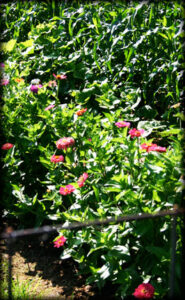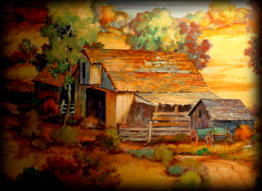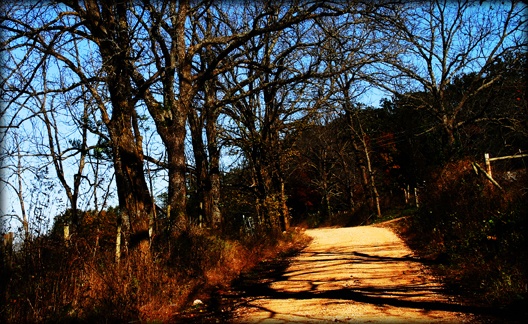by Joshua Heston
A close, living connection with the land could well be the most important thing we, as a society, can cultivate.
And sadly, traditional farming has become some sort of old-timey thing relegated to the distant past while we traipse up and down the superstore aisles looking for food far-removed from its original state.
It should be different.
And State of the Ozarks is dedicated to not just document the agricultural history of the region, but to actively celebrate and promote the development of sustainable farming practices and heirloom food production.
The Road to Baker Creek
by Joshua Heston
Although Jere Gettle was not born in the Ozarks, this young man clearly demonstrates the Ozark spirit of determination, self-reliance and respect of heritage. “I’ve been interested in gardening since I was really little,” he says.
Really little is right. He planted his first squash and tomato garden at the age of four.

Photo detail, Zinnias, heritage garden, Rogersville, Missouri (Farm of Miss Harriet Wills-Hamilton).
“In 1993, we moved here from Montana and I had a longer growing season. I started ordering more catalogs and joined Seed Savers Exchange. In 1997, I decided to put out my own little price list and in 1998, I sent out my first seed catalog to 550 gardeners — filling all the orders in my room and fulfilling my dream to be a seeds man.”
Jere Gettle was 17.
Today, he works with a network of about 50 small gardeners and seed collectors. He also travels extensively to obtain new varieties. “What we’re trying to get people to know is about all the diversity out there,” Gettle explains. “I’ve been to Southeast Asia three times and Central America three times.
“We want gardeners to grow something they’ve never grown before. We have about 1,100 different varieties of vegetables, flowers and herbs from 66 countries.
“Most of the varieties are heirloom, which means they were passed down from family to family. We also have several different types of heirloom tomatoes from right here in the Ozarks.
By midwinter of 2007, the Gettles had completed the first phase of the village Bakersville, located on the family farm.
“We wanted to develop a living history village and farm on our 1850’s era homestead. When people come here we’d like them to have a good time, learn something about traditional ways of life, food and music.”
Bakersville, located just north of Mansfield, continues to expand with an old-time mercantile, apothecary, jail, two music barns, and a native stone oven. A seed museum, blacksmith shop, a bakery and historic livestock barn are included in Gettle’s 2008 plans.
Since 1998, Jere’s seed list to 550 customers has grown to a 100-page catalog mailed to a record-110,000 folks.
Baker Creek Seed Company hosts 12 garden and music shows per year, each on the first weekend of the month. “Agriculture and seeds provide the basics up which our lives depend,” explains Gettle. “We must protect this foundation as a safe and genetically stable source for future generations.”
It is clear Baker Creek Seed Company is doing its part.
Originally published January 4, 2008

Photo detail, George Kieffer Mural, Silver Dollar City September 30, 2006.
Tomato Varieties of the Ozarks
We have several different types of tomatoes that have been passed down from generation to generation, including the Missouri Pink Love Apple, the Millionaire, the German Lunchbox and Gerry’s German Giant.
“Love apple” was the old name for tomatoes back when they were believed to be poisonous. In the 1850s, the family growing the Missouri Pink Love Apple variety grew it as an ornamental!
Gerry’s German Giant has been grown by our local mechanic here in Mansfield. A lot of the tomatoes grown in the Ozarks are of German origin. — Jere Gettle, 10/24/07
“…the sky seems closer here.”
by Joshua Heston
Those words (or something mighty close to them) Laura Ingalls Wilder wrote about these Ozark mountains. Many don’t realize she and her husband Almanzo Wilder settled on a small farm near Mansfield, Missouri, in 1894. The property would come to be known as Rocky Ridge and it was there the now-world-famous Little House book series was written.
The Ozarks seem to call to people for so many different reasons. Rose O’Neill, the world-famous art nouveau illustrator, found solace in her beloved estate Bonniebrook, just a few miles north of present-day Branson, Missouri. Thomas Hart Benton, George Kieffer and M.E. Oliver, Harold Garrison. Today, a whole slew of accomplished artists are creating amazing work in the community of Eureka Springs.
The sky seems closer here.
There is yet a richness here — painters, woodcarvers, sculpters, quiltmakers, dollmakers, musicians, cooks, gardeners, farmers (for there is lyrical qualities in even the tilling of earth) — that is at once easily recognized and yet indiscernable, often hidden.
The Ozarks and her people do not shout accomplishments from the rooftops. Indigenous culture rarely has a marketing degree. Often the richness of our unique mountain plateau is softer, quieter, showing itself from a front porch with strains of dulcimer or fiddle, by a pot of beans simmering on the stove top or a plate of turnip greens, fried up bright along with bacon and onions. Or of neighbors helping neighbors.
It’s a good way to live.


